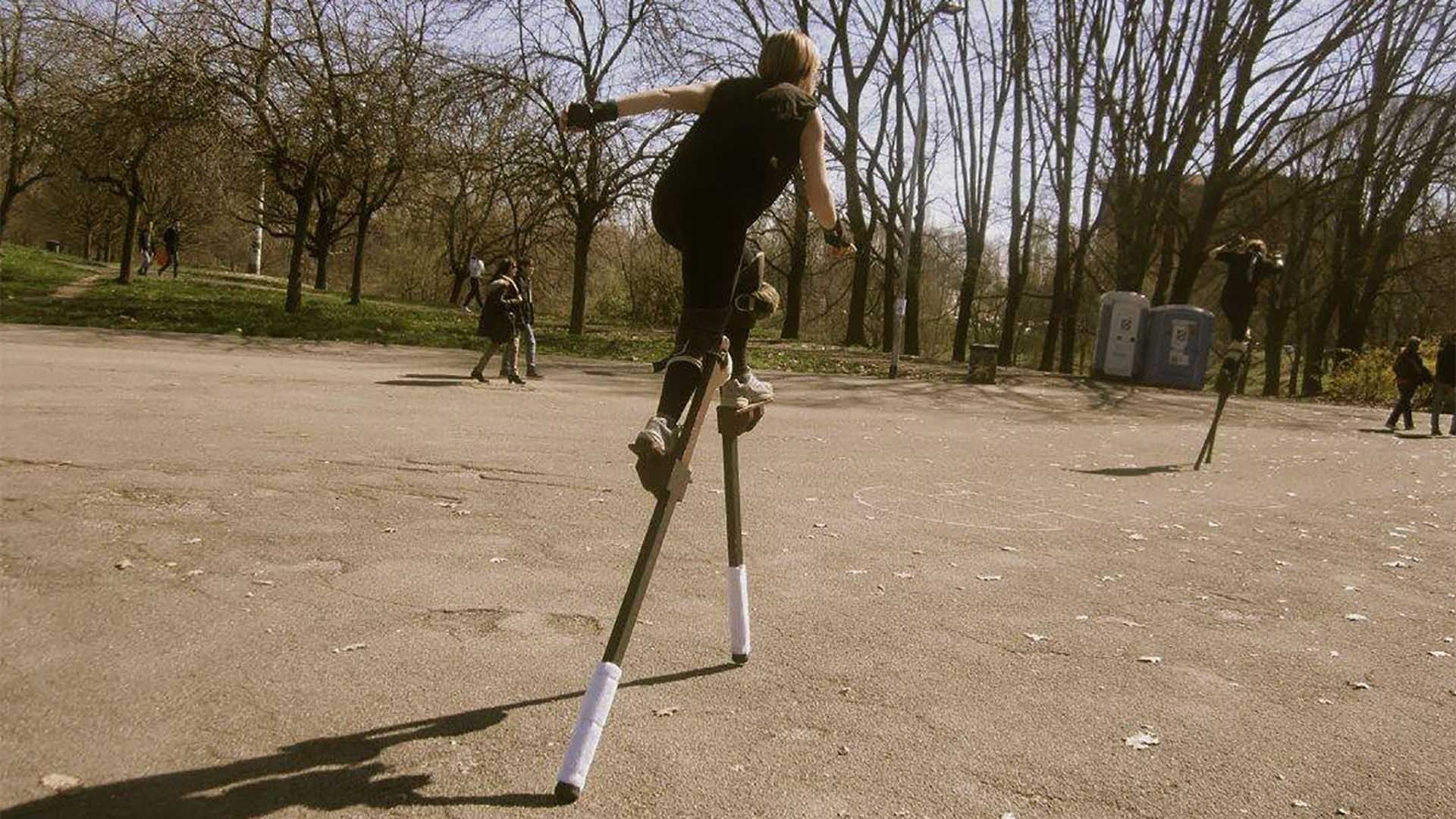This website uses cookies so that we can provide you with the best user experience possible. Cookie information is stored in your browser and performs functions such as recognising you when you return to our website and helping our team to understand which sections of the website you find most interesting and useful.
Technique of stilts

The stilts are “pieces of wood” refined, which affect the audience and that put a strain on the senses of those who use them. Even if the practice allows to make difficult sequences and to develop a certain virtuosity, we must not forget that they are the means, not the end. In other words, they must disappear to make room for the actor. Working on stilts means being immediately visible (necessary condition for the shows that take place on the street and not on a raised stage).
Secondly, the work on stilts is linked to the disproportion, a condition that obliges the actor to use his body / voice instrument by amplifying and dilating the actions and the vocal emission. A show on stilts must take into account both elements: visibility and dilatation. It is not enough to stop at the first of the two, since it is essential to be aware of the disproportion of the actor’s body.
The seminar is open to beginners (beginners need to know how to walk), intermediate and advanced
- Work on the ground: heating, openings, risers, balances, unbalances, rhythmic sequences
- On stilts: basic exercises for walking, dissociating the lower part of the body from the top
- Learning a routine
- Slings, forward, side, back, crossings, segmented steps, pirouettes without and with jump
- Jumps, skipped sequences, descents and ascents, with the stick, with the help of the companion, assembly of sequences
- Couples exercises
Work Tools for Beginners
- Knee pads, elbow pads and cuffs (set for skates), their stilts, ideal height 1m
Work Tools for Intermediate and Advanced
- Knee pads, elbow pads and cuffs (set for skates) your stilts, ideal height 1m
- Stick for jumps: section diameter: 4 cm- height: to determine the height wear the stilts; the stick, standing upright, should be 5 cm above the navel- stoppers: of rubber tips (no plastic) to avoid slipping, the tips are like those that are put on stilts only in diameter suitable for the stick
- Stick for manipulations: section diameter: 3 cm, length: 2.10 m- stoppers: rubber tips (no plastic) to avoid slipping, the tips are like those that are put on stilts only in diameter suitable for the stick.
Bibliography
- T. Correale Santacroce, Trampoli. Immaginario e tecniche, Corazzano, Titivillus, 1997
